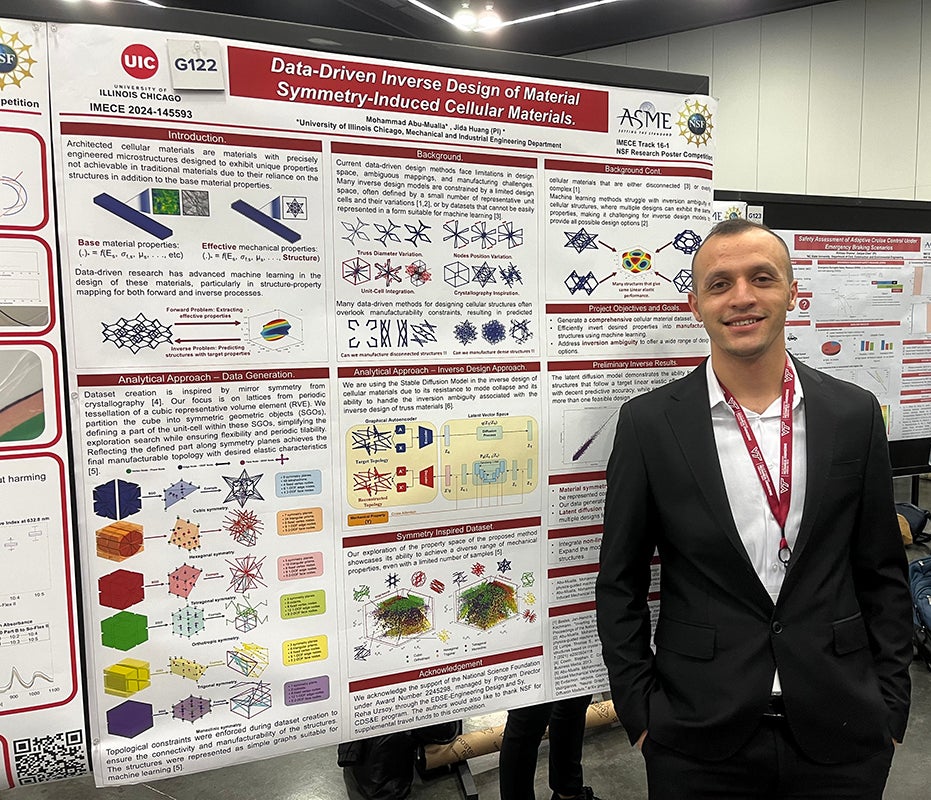A new tool for designing mechanical objects
1

Think about a tool such as ChatGPT, but instead of writing essays or answering questions, it helps design mechanical objects. A user could type in the details of something they want to create — like a part for a car or a piece of sports equipment — and the tool would instantly come up with a design ready to be 3D printed or manufactured.
This type of tool, which PhD student Mohammad Abu-Mualla is working on at UIC, could save engineers hours they usually spend tweaking designs. He recently won first place at ASME’s 2024 International Mechanical Engineering Congress & Exposition NSF Student Poster Competition for the research into the tool.
“My research focuses on creating a tool specifically for designing structures called cellular materials,” Abu-Mualla said.
Cellular materials are lightweight but possess highly promising properties and are often inspired by shapes found in nature—like the intricate patterns of a spiderweb or the honeycomb structure of a beehive.
“These designs are so complex that it’s hard for humans to create them just by guessing. That’s where my work comes in. I’m developing a way to use technology to design these incredible structures faster and more efficiently than ever before,” he said.
His work can potentially revolutionize many industries as cellular materials possess unique properties. Their strength-to-weight ratio is ideal for lightweight car and airplane parts, while their energy absorption is ideal for protection during a crash. They can even have a negative Poisson’s ratio, which allows them to get thicker when stretched. Designing these materials instantly could transform the automotive, robotics, biomechanics, and many other fields by saving time and opening new innovations.
“This research could unlock materials we’ve never seen before—structures that bend, twist, or grow stronger under pressure. It has the potential to reshape industries and even mimic nature in ways we once thought impossible,” Abu-Mualla said.
Abu-Mualla works under the direction of Assistant Professor Jida Huang in the DREAM Lab at UIC, where he said nothing is off-limits and creativity thrives. Abu-Mualla added he also has the freedom to explore bold, new ideas.
“Dr. Huang’s constant support and encouragement pushes me to grow as a researcher in every way. The diversity of projects in our lab means there’s always something exciting to learn from my lab mates, and their ideas often inspire my own research,” he said.